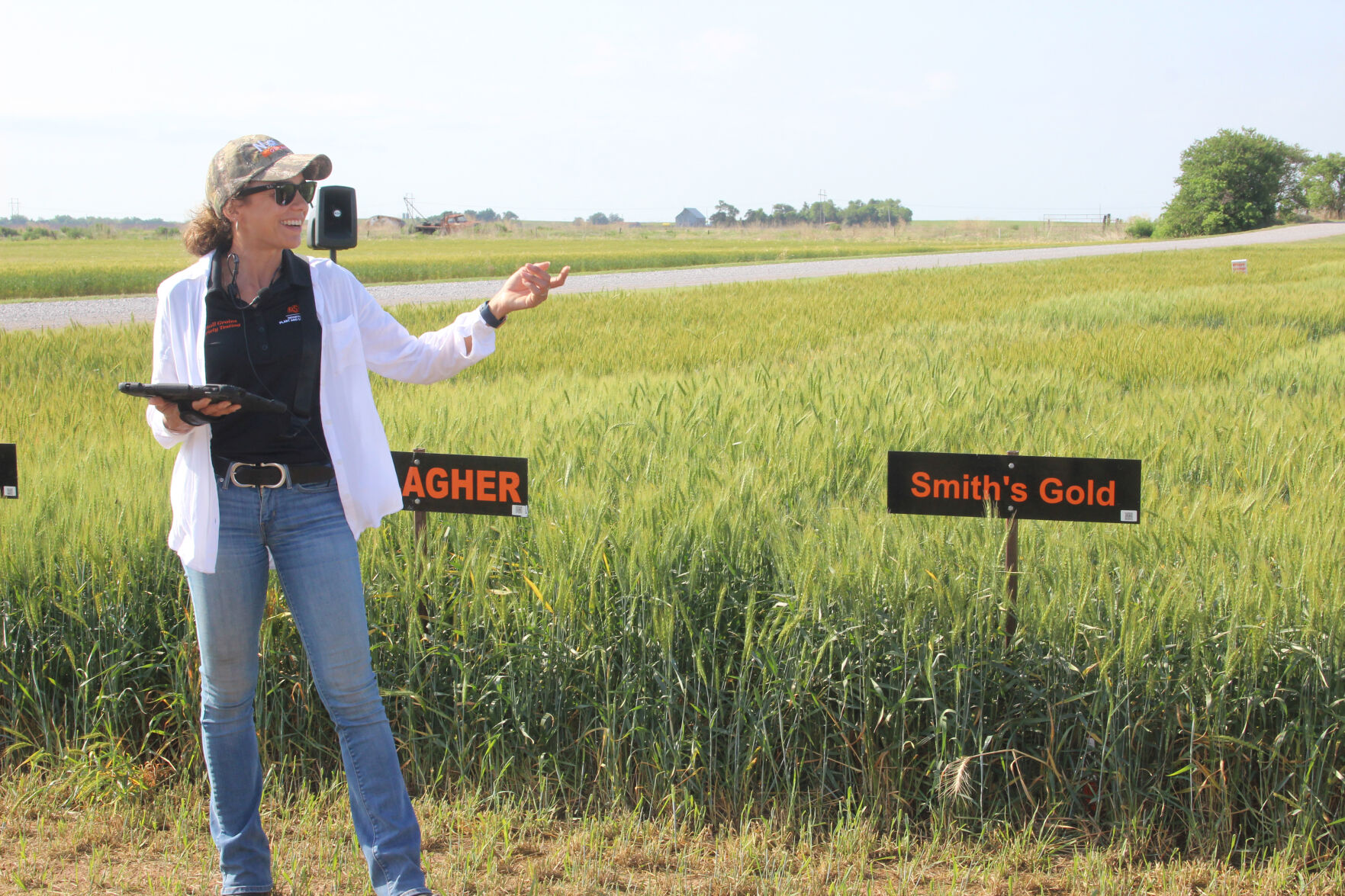Wheat growers and industry leaders gathered for a field day at the North Central Research Station in Lahoma, Oklahoma, on May 13, for updates on the state of the current wheat crop and to learn what developments researchers have coming down the pike.
Even though much of the state has been experiencing drought conditions, most of the wheat plots at the research station were in fair condition.
Speakers included Oklahoma State University Small Grains Extension Specialist Amanda Silva, who presented an update on wheat varieties; OSU Integrated Pest Management Coordinator Tom Royer with a pest management update; OSU’s Regents Professor Brett Carver who spoke about new, high quality wheat varieties that are being developed through the OSU Wheat Improvement Team; OSU Small grains pathologist Meriem Aoun with a wheat disease update; OSU Extension Specialist in Precision Nutrient Management Brian Arnall who spoke on nutrient management; OSU Extension Specialist for Small Grains Misha Manuchehri who discussed weed management systems; OSU Associate Professor of Plant and Soil Science Phillip Alderman with a presentation about agricultural systems modeling; and OSU Extension Economist Kim Anderson who explained the current climate of wheat marketing.
Some highlights of the field day included Royer’s presentation on pests being found in wheat at this stage of the crop. He said brown wheat mites have been a problem throughout western Oklahoma. Additionally, as of March 1, lorsban insecticide is no longer available for use in any food crop and the only other product that is registered for control of brown wheat mite is dimethoate. He also indicated supplies of dimethoate are in short supply. Royer evaluated several insecticides, including beta cyfluthrin, lambda cyhalothrin, gamma cyhalothrin, and zeta cypermethrin and compared them to dimethoate.
“We have data to support these insecticides are as effective at controlling brown wheat mite, even though the mite is not listed on their labels, as long as it is applied according to labeled rates for that crop, and that the applicator be responsible for the effectiveness of control of the product,” Royer said.
Royer also discussed an ongoing 5-year collaborative research project with Silva on the effectiveness of adding a pyrethroid to a winter top-dress nitrogen application.
“We found that it seems to improve yield and is economically justified,” Royer said. “We have also shown that it is reducing a soil-dwelling mite called the winter grain mite, which might be the culprit that is robbing yield in continuous wheat production systems.”
Aoun said this year’s weather conditions proved to be a good environment for insects like aphids and mites and viruses like barley yellow dwarf virus and wheat streak mosaic virus.
“Barley dwarf virus is very common here in Oklahoma, but I think a new thing that we saw this year was that wheat streak mosaic virus, which is common in the Panhandle, was seen all across Oklahoma,” Aoun said.
Aoun said there is much available to remedy this wheat streak mosaic virus, but there are some varieties that are more resistant to it. Additionally, she advises growers to allow more time between harvest and the emergence of a new crop, which will reduce the population of aphids and mites. In late April, root rot diseases, like fusarium crown rot, was reported in many fields. After some of Oklahoma received rainfall in early May, rust diseases became an issue. Aoun said she has been seeing stripe rust and leaf rust at the Stillwater research station. However, it is late enough in the season that rust should not have a large impact.
Carver said the OSU Wheat Improvement Team has been focusing on developing hard red winter wheat varieties with special emphasis on quality and protein. He said the varieties they have developed stand up to some of the strongest wheat ever bred.
“We want to add those together and keep the yield,” Carver said. “We don’t want to have any sacrifice of yield and we don’t have to. That is the beauty of this. It wasn’t easy and it took 10 years to get here, but I think we’ve got it.”
Although wheat yields and quality are expected to be below normal this year, producers can always look forward to future crops and incorporating the new advancements researchers at land grant universities, like OSU, are developing to improve wheat.
Lacey Vilhauer can be reached at 620-227-1871 or [email protected].



